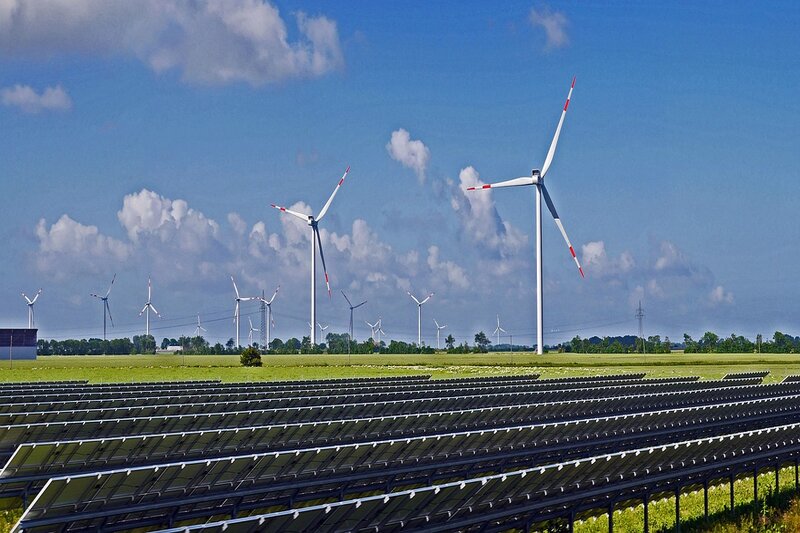You may have heard some governments or organisations pledge to “achieve carbon neutrality” by a certain date or reach “net zero emissions.” Some have even pledged to go “carbon negative.” Understanding these climate terms can help us to more accurately scrutinise climate targets and their effectiveness. What do these climate terms mean?
—
Here is a brief summary of important and often-used climate terms:
- Decarbonisation- decreasing the ratio of carbon dioxide or all greenhouse gas emissions related to primary energy production. While full decarbonisation means zero carbon emissions, decarbonisation doesn’t imply zero emissions, as emissions can be balanced by carbon sequestration. To effectively communicate the scale of change needed, the term must be accompanied by a timeframe and rates of decarbonisation.
- Net-zero carbon emissions- while this is considered a synonym for carbon neutrality, a “net-zero” target refers to reaching net-zero carbon emissions by a selected date.
- Net-zero GHG emissions- when accurately used, net-zero GHG emissions are achieved when emissions of all greenhouse gases are balanced by greenhouse gas removals. This is the same concept as net zero carbon emissions but conveys a net zero emissions target for CO2 and all non-CO2 gases.
- Carbon neutrality- this means annual zero net anthropogenic (human caused or influenced) CO2 emissions by a certain date. By definition, carbon neutrality means every ton of anthropogenic CO2 emitted is compensated with an equivalent amount of CO2 removed (e.g. via carbon sequestration), but this term has been used differently on occasion. Instead of aiming at zero net emissions, some countries seem to misinterpret carbon neutrality as stabilizing emissions at a certain level.
- Climate neutrality- is the same concept as carbon neutrality but it extends to zero net anthropogenic greenhouse gas emissions (including emissions beyond carbon dioxide).
- Carbon negative- also called “climate positive,” this means that an activity goes beyond achieving net zero carbon emissions to actually create an environmental benefit by removing additional carbon dioxide from the atmosphere.
Looking at climate goals set by countries, cities, etc, it is not difficult to see where confusion has arisen. California’s goals include cutting all greenhouse gas emissions, including carbon dioxide, methane and nitrous oxide, and offsetting what it cannot cut. China’s goal is only focused on carbon dioxide, according to Jiang Kejun, a researcher at the National Development and Reform Commission. Frustratingly, both then-Governor Jerry Brown, in his 2018 executive order, and President Xi Jinping, in his September speech to the UN, used the phrase “carbon neutrality.”
You might also like: The Texas Blackouts Weren’t Caused by Renewables. So What Happened?
Carbon dioxide accounts for 75% of the warming impact that humans have on the planet. Other greenhouse gases, like methane, have different impacts on warming. For example, methane can trap many times more heat per molecule than carbon dioxide, but stays in the atmosphere for a much shorter time. We hear more about carbon because it’s likely the easiest gas to cut and is thus targeted first in “neutrality” goals. Reducing some non-carbon greenhouse gases, such as nitrous oxide produced from fertiliser run-offs, can be much more difficult to find replacements for fossil fuels.
The IPCC says that to have a 50% chance of stabilising global warming at 1.5 degrees Celsius above pre-industrial levels, the world has to reach net-zero carbon dioxide emissions in 2050 and net-zero greenhouse gases in 2067, including the use of negative emissions later in the century.
Many European countries are working towards “climate neutrality,” which is not only about carbon, but other gases, too. Confusion also persists because of somewhat confusing or complicated NDCs, like that of Costa Rica, which aims to “achieve carbon neutrality by 2021 with total net emissions comparable to total emissions in 2005,” while Ethiopia’s goal is to “achieve carbon-neutral middle-income status before 2025” and at the same time “limit its net greenhouse gas (GHG) emissions in 2030 to 145 Mt CO2e or lower.” Meanwhile, Microsoft has committed to only just reducing its emissions but to going carbon negative, removing all the carbon the company and its suppliers have emitted since its founding in 1975.
It is important to realise that our impact on the climate goes beyond just emitting greenhouse gases. Vehicles and factories also emit particulate matter or aerosols into the atmosphere that can reflect sunlight and actually lower the impact of heat-trapping gases. To be climate neutral means to stop any particulate matter pollution as well, but this hasn’t been promised by many.
Confusion around climate terms is only made worse by language barriers– when German environment minister Svenja Schulze translated European Commission President Ursula von der Leyen’s reaction to China’s 2060 pledge, she called it a commitment to “climate neutrality” (klimaneutralität) rather than “carbon neutrality” (kohlenstoffneutralität). The difference in the long term could mean living on two different planets.
It’s vital for governments and organisations around the world to be aware of these nuances and ensure that they properly communicate them so as not to create confusion among the public and risk setting goals that actually won’t do much to mitigate climate change in the long term.

















